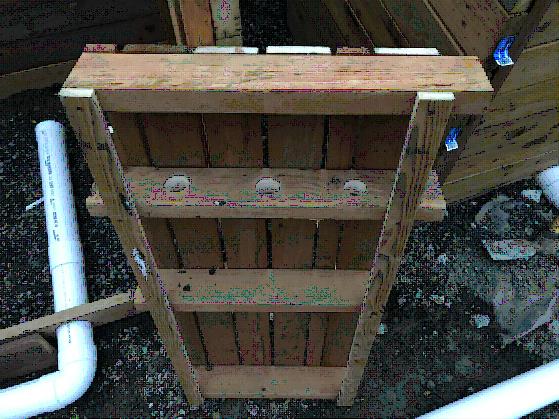I'll preface this post by saying that I am not a big supplement person because so many of them seem unlikely to result in anything but expensive urine. However, one of my Thoroughbreds came to me with crappy feet so I did a lot of research on how to help him grow healthy new hoof, and this is one area in which there's some scientific support for supplementation. I did a lot of research and cost comparisons, and I ultimately ended up mixing my own hoof supplement, which is less expensive than premade options and contains more adequate levels of some key ingredients.
Here is what some commercial hoof supplements cost, and what they contain:
Prices are as of the date of this post, including shipping whenever I could calculate it without entering personal information. This is certainly not an exhaustive list, as there are probably hundreds if not thousands of hoof supplements out there. It also doesn't include every ingredient in every supplement since that would make the spreadsheet unwieldy and impossible to post. Plus, 2 mg of lysine, for example, is such a drop in the bucket compared to what the horses take in from their grass, hay, and grain that it's hardly worth noting. I was primarily concerned about biotin, copper, and zinc so that's what I included.
Here are some sources of biotin, copper, and zinc:
I ended up choosing Uckele pelleted copper and zinc (because my horse is picky about powder) and Biotin Plus (which has a ground flax base and smells absolutely delicious). If I bought all those ingredients today it would cost me $24.48 per month. None of the commercial hoof supplements come close to providing the levels of copper and zinc that I can get for this price, except for Hay Harmony, which I discovered recently and might try when I finish my current bag of Biotin Plus. Since Uckele Biotin 2% requires such an incredibly low feeding rate (only 1 g of powder per day!) that might be worth a try too; $3.35/mo doesn't sound like much savings but in a year that adds up to $40.
One tip is to stock up on supplement ingredients during major sales, like Black Friday. They should keep for a long time if properly stored and you may save 10-20%. Buying large quantities at a time can buffer you from price increases too.
 |
| 4 oz cup of homemade supplement, with Biotin Plus on the bottom and Uckele pelleted copper and zinc on top. Cheaper and more environmentally friendly than SmartPaks or commercial hoof supplements! |
Information on my ingredients
Biotin (a B-vitamin) is a very common hoof supplement ingredient. Some studies have found statistically significant improvements in hoof quality when horses are fed 15 to 25 mg of biotin per day. (Keep in mind that results won't be evident until the new hoof grows out, and that it takes 8 to 15 months for a horse to grow all new hoof.) Other studies have found no effect, but everyone seems to agree that reasonable biotin supplementation can't hurt and might help. For $10 per month, I thought it was worth a shot. (https://ker.com/equinews/biotin-basics/ and https://thehorse.com/130220/biotin-does-it-work/)
Why feed copper and zinc? The soil in my area is very high in iron, which means that the grass and water are as well. (To see soil nutrient levels in your area, go to the National Geological Survey website.) Many commercial horse feeds also contain added iron for some reason, despite most horses getting plenty from their environment. High iron intake negatively impacts the absorption of copper and zinc, which are crucial for connective tissue strength and many other functions.
"Copper supports enzymes that form the strengthening cross-links between collagen and elastin molecules in connective tissue. Deficiencies lead to abnormalities in bone, cartilage, tendons, ligaments, and arterial walls among the most dramatic consequences. In horses, copper deficiency has been linked to uterine artery rupture in mares, a fatal complication of labor. Copper deficiency is known to cause developmental bone disease in foals. From research in other animals we also know that copper deficiency has adverse effects in hair quality. Although it hasn't been studied in horses, remember that the ingredients and growth mechanisms for hair and the hoof are virtually identical.
Zinc performs a host of functions in the body. Structures on proteins called zinc fingers allow them to bind to DNA. Zinc fingers also influence the folding and structure of proteins. In enzyme systems, zinc is essential for pigment formation, antioxidant function, transport of carbon dioxide in the blood, bone building and remodeling, insulin production and release among others. (Eleanor Kellon, VMD, reprinted on https://www.hoofrehab.com/Diet.html)
"When the efficacy of hoof supplements is considered, the inclusion of zinc methionine along with biotin and 3 grams of methionine appears to result in greater growth of the stratum germinativum and the tubular horn of the hoof wall than does the feeding of biotin alone." (https://ker.com/equinews/trace-minerals-horses-zinc-copper/)



















































